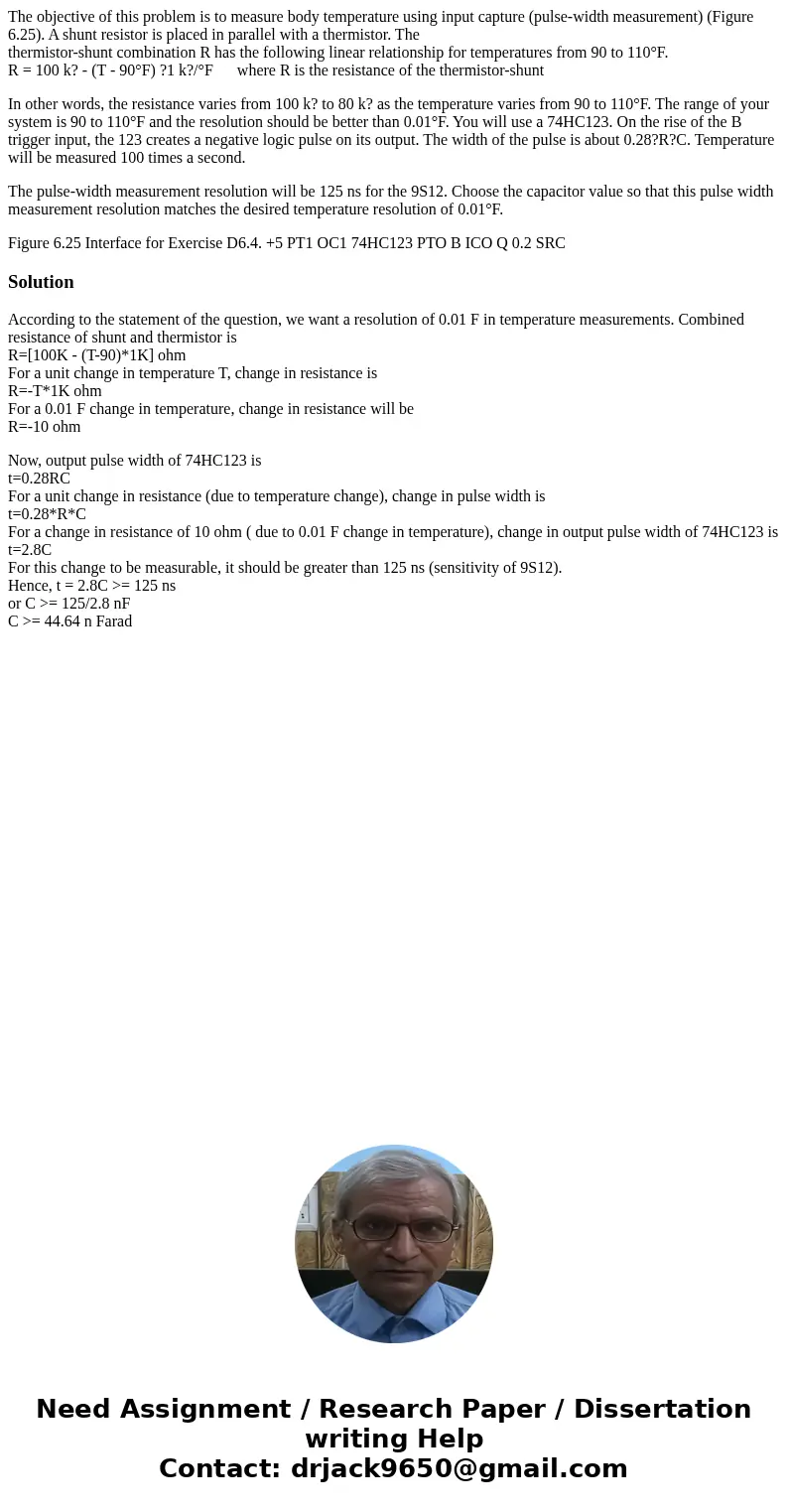The objective of this problem is to measure body temperature
The objective of this problem is to measure body temperature using input capture (pulse-width measurement) (Figure 6.25). A shunt resistor is placed in parallel with a thermistor. The
thermistor-shunt combination R has the following linear relationship for temperatures from 90 to 110°F.
R = 100 k? - (T - 90°F) ?1 k?/°F where R is the resistance of the thermistor-shunt
In other words, the resistance varies from 100 k? to 80 k? as the temperature varies from 90 to 110°F. The range of your system is 90 to 110°F and the resolution should be better than 0.01°F. You will use a 74HC123. On the rise of the B trigger input, the 123 creates a negative logic pulse on its output. The width of the pulse is about 0.28?R?C. Temperature will be measured 100 times a second.
The pulse-width measurement resolution will be 125 ns for the 9S12. Choose the capacitor value so that this pulse width measurement resolution matches the desired temperature resolution of 0.01°F.
Figure 6.25 Interface for Exercise D6.4. +5 PT1 OC1 74HC123 PTO B ICO Q 0.2 SRCSolution
According to the statement of the question, we want a resolution of 0.01 F in temperature measurements. Combined resistance of shunt and thermistor is
R=[100K - (T-90)*1K] ohm
For a unit change in temperature T, change in resistance is
R=-T*1K ohm
For a 0.01 F change in temperature, change in resistance will be
R=-10 ohm
Now, output pulse width of 74HC123 is
t=0.28RC
For a unit change in resistance (due to temperature change), change in pulse width is
t=0.28*R*C
For a change in resistance of 10 ohm ( due to 0.01 F change in temperature), change in output pulse width of 74HC123 is
t=2.8C
For this change to be measurable, it should be greater than 125 ns (sensitivity of 9S12).
Hence, t = 2.8C >= 125 ns
or C >= 125/2.8 nF
C >= 44.64 n Farad

 Homework Sourse
Homework Sourse